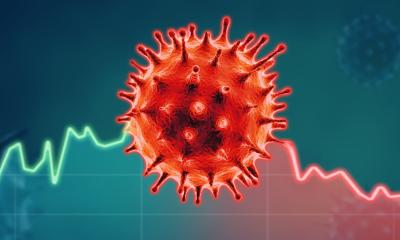© Miikka Luotio – unsplash.com
News • HIV, TB, viral hepatitis, STIs
Europe not on track to reach 2030 health goals
Although progress has been made towards the Sustainable Development Goal (SDG) target 3.3 to end the epidemics of HIV, tuberculosis (TB), and combatting viral hepatitis B and C and sexually transmitted infections (STIs) by 2030, the European Union/European Economic Area (EU/EEA) is off track for many of the targets, according to the first monitoring report on the SDGs released by the European Centre for Disease Prevention and Control (ECDC).
The first in a series of progress reports planned until 2030 presents the latest data on incidence, prevention, testing, treatment, and mortality across the EU/EEA for the four disease groups being monitored by ECDC for the SDGs.1,2 Although progress has been made in some areas, many countries are not on track to meet the 2030 targets, and significant data gaps hinder a complete assessment.
‘Europe needs bold, coordinated action on prevention, testing and treatment to achieve our 2030 SDG targets. These diseases are preventable, as is the burden they place on health systems, patients and their families. We have five years to act; we must make them count,’ said ECDC Director Pamela Rendi-Wagner.
Recommended article

Article • Outbreak prevention and management efforts
Infectious diseases: new challenges for EU monitoring
Avian flu, MERS, Covid-19, monkeypox: outbreaks of infectious diseases are getting more common in Europe. As a result, the EU must adapt its surveillance strategies and introduce more data-driven, interdisciplinary countermeasues.
The estimated number of new HIV infections has declined by 35% since the 2010 baseline in the EU/EEA, but progress is slower than needed to reach the 2025 interim target. HIV testing and treatment progress is encouraging, but reaching the undiagnosed and ensuring linkage to care remains a challenge across the EU/EEA. The use of prevention tools, such as pre-exposure prophylaxis (PrEP) for HIV, is increasing but needs further scaling-up. For TB, the estimated incidence has decreased by 35% since 2015, but success rates for TB treatment remain below the 90% target, particularly for drug-resistant TB.
Viral hepatitis B and C cause the majority of the nearly 57 000 annual deaths attributed to AIDS, TB and viral hepatitis in the EU/EEA. For hepatitis B and C, the available information suggests significant shortfalls in reaching testing and treatment coverage targets, and mortality rates show no signs of decline.
Reported cases of STIs such as syphilis and gonorrhoea are increasing across the EU/EEA, reaching the highest numbers since surveillance by ECDC began in 2009. Data on testing and treatment coverage for STIs are largely unavailable, complicating the overall picture.
In order to reach the 2030 targets, efforts must be made to scale up prevention interventions like PrEP for HIV, hepatitis B vaccination, and harm reduction services for people who inject drugs, alongside promoting condom use. It is also crucial to expand integrated testing services for multiple infections in various settings, including community-based testing, to reach those at risk at an earlier stage. Improving linkage to care and supporting treatment adherence is vital for improving individual outcomes and preventing onward transmission, especially for TB and viral hepatitis.
Strengthening the quality and completeness of surveillance and monitoring data is essential, as is collecting data specific to the key populations most affected by these infections. To reduce mortality from preventable diseases, sustained efforts are needed, and improving the availability and quality of surveillance data is fundamental to track progress accurately.
References:
- Progress towards reaching the Sustainable Development Goal 3.3 targets related to HIV, TB, viral hepatitis and sexually transmitted infections in the European Union and European Economic Area – Evidence brief. Stockholm: ECDC; 2025.
- European Centre for Disease Prevention and Control. Progress towards reaching the Sustainable Development Goals related to HIV, viral hepatitis, sexually transmitted infections and tuberculosis in the EU/EEA: 2024 progress report. Stockholm: ECDC; 2025.
Source: European Centre for Disease Prevention and Control
24.04.2025







